ARTICLE AD BOX
James Coomarasamy & Annabelle Ariyanayagam
BBC World Service

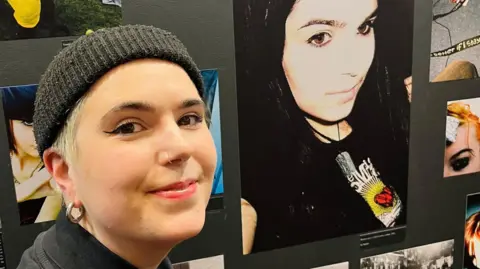 AJ Turner
AJ Turner
AJ with a picture of themselves on the display
Black hair, a floppy fringe covering a smoky eye, and music from bands like Green Day is probably how most remember the emo sub-culture in the early 2000s.
An exhibition called I'm Not Okay: An Emo Retrospective has become one of the most visited displays at the Barbican Music Library with over 35,000 people coming through the doors to reminisce this era.
Rare moments of packed shows, candid backstage moments and intimate portraits of emo youth are pinned on black walls of the building.
The show has also given emos a chance to reconnect with others and share their memories of the time.

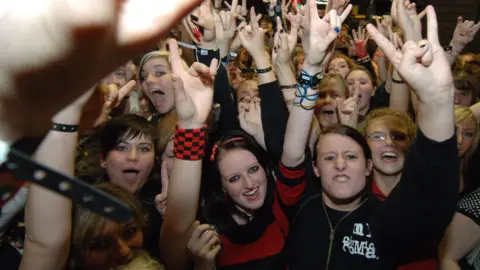 Museum of Youth Culture
Museum of Youth Culture
More than 35,000 people have visited the exhibit
AJ Turner is a 32-year-old musician.
"The emo subculture was more than just a scene for me as a teenager in the noughties.
"It was a lifeline at a time when I was experiencing severe depression, loneliness, and bullying.
"My life became filled with attending emo concerts, where I felt understood and part of a supportive community," AJ told the BBC World Service.
Visitors recognised AJ from the images and they found the sense of community still lingers.
AJ still defines themselves as emo as the music they create is heavily influenced by that period.
"I used to wear an 'MCR (My Chemical Romance) saved my life' T-shirt to gigs, and this stands true to this day for me," they said.
BBC World Service presenter James Coomsmarray went to the exhibition - to join James on his trip click here
Defined by its music, fashion and sense of emotional distress, emo culture peaked in the 2000s with bands like My Chemical Romance and hits like Welcome To the Black Parade taking it mainstream.
The exhibition delves into themes of identity, angst, and catharsis that marked a generation's search for belonging and self-expression.
Lyrics from bands dubbed as emo sometimes included notions to self-harm which led to artists trying to disassociate from the genre, ultimately leading to its apparent downfall in mainstream media.
"Whilst the subculture was vilified in the press, it allowed many of us emo kids to get through our most challenging times," said AJ.

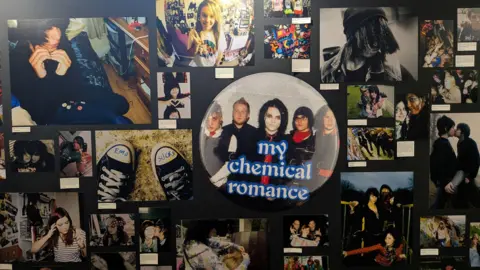 Museum of Youth Culture
Museum of Youth Culture
The display showcases clothing, pictures, and vintage technology
Jamie Brett is the creative director and curator at the Museum of Youth Culture.
"We're looking at the youthquake that happened in the mid 2000s," he said.
"The psyche of the public at the time portrayed a bleak life for young people and they responded in the way they dressed.
"Emo was the only way we could see our future."
'A lifeline'
According to Jamie, emo originated in Washington DC in the 1980s.
It then expanded to create another sub-culture called scene in the mid to late 2000s.
Scene was defined by its brightly coloured fashion sense, big, garish, dyed hairstyles and layered clothing.
Social networks like Myspace, Buzznet, and hi5 allowed young people to share their styles online to the rest of the world.
"For the first time, young people were using the internet to express themselves - it was the first digital subculture," said Jamie.

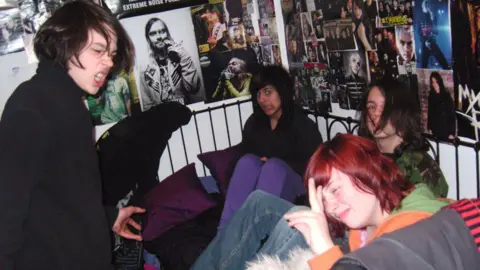 AmberWillis/MuseumOfYouthCulture
AmberWillis/MuseumOfYouthCulture

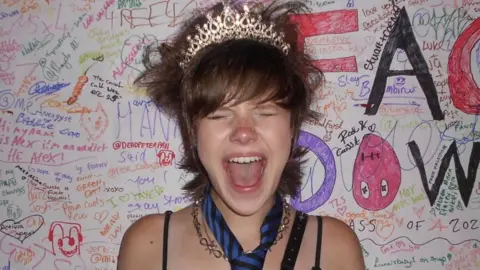 LottiePaterson/MuseumOfYouthCulture
LottiePaterson/MuseumOfYouthCulture
Posters often from magazines like Kerrang! covered the walls of emo rooms
All the photos were sent in by emos and scenes to share in the exhibition
'Nostalgic'

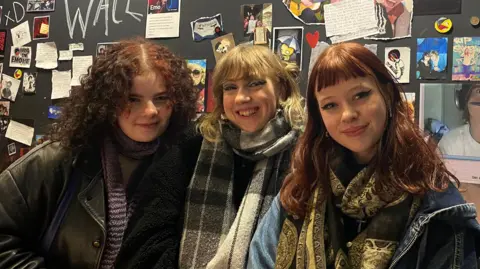
Maddie (left), Seren (middle), and Molly (right), visited the exhibition for Seren's 20th birthday
Opposite the memory wall where visitors have covered the space in notes and printed screenshots of old MySpace accounts, three women are eagerly talking about the display in front of them.
"It's really cool, fun, it's really cute, it just makes you smile," they said speaking over each other.
Maddie, Seren and Molly are students who made a special visit to the exhibition for Seren's birthday.
"It's really nice to see people's personal emo phases," said Molly.
"I am emo at heart," said Seren. "I grew up around it with my older siblings, so it's a nostalgic thing."
The first concert she attended was popular emo band Fall Out Boy, and after seeing MCR last year, she is part of the new generation of emos continuing the legacy.
"It's not a phase" became a popular phrase when adults would tell teenagers they would eventually grow out of the trend
Many throw-back pictures and art work cover the walls
All of these images have been sent in by the public to the museum.
Any emos or scenes who have photos or memories of the noughties era have been asked by the museum to get in touch.
The free exhibition at the Barbican Centre is a collaboration between the Museum of Youth Culture and the Barbican Music Library and runs until 7 February.

 3 months ago
22
3 months ago
22
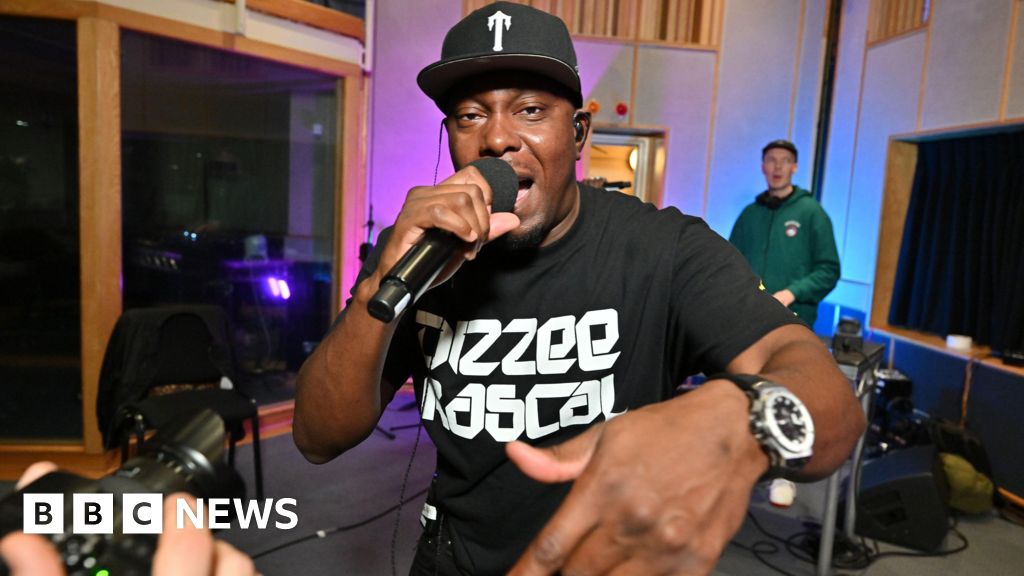
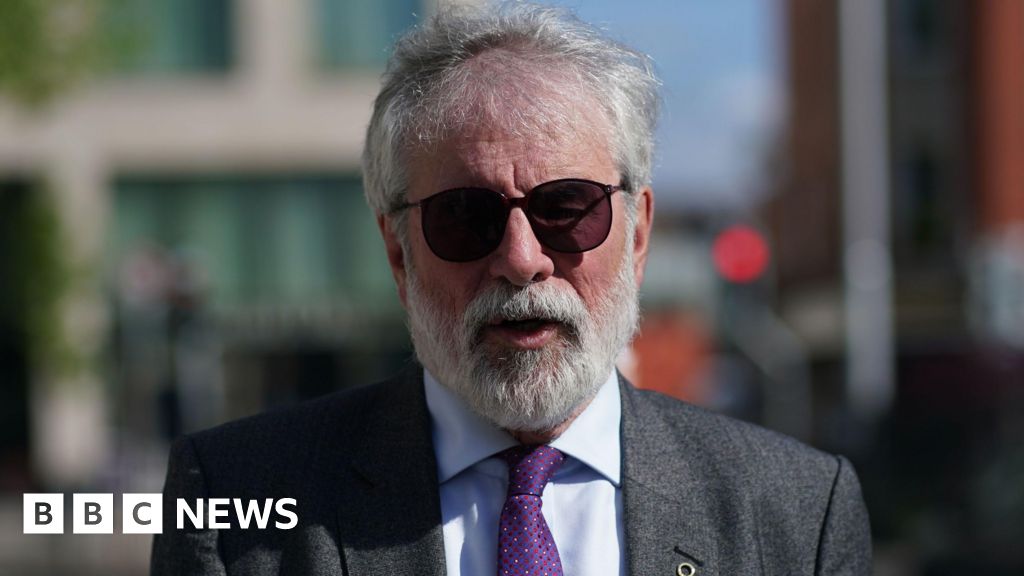
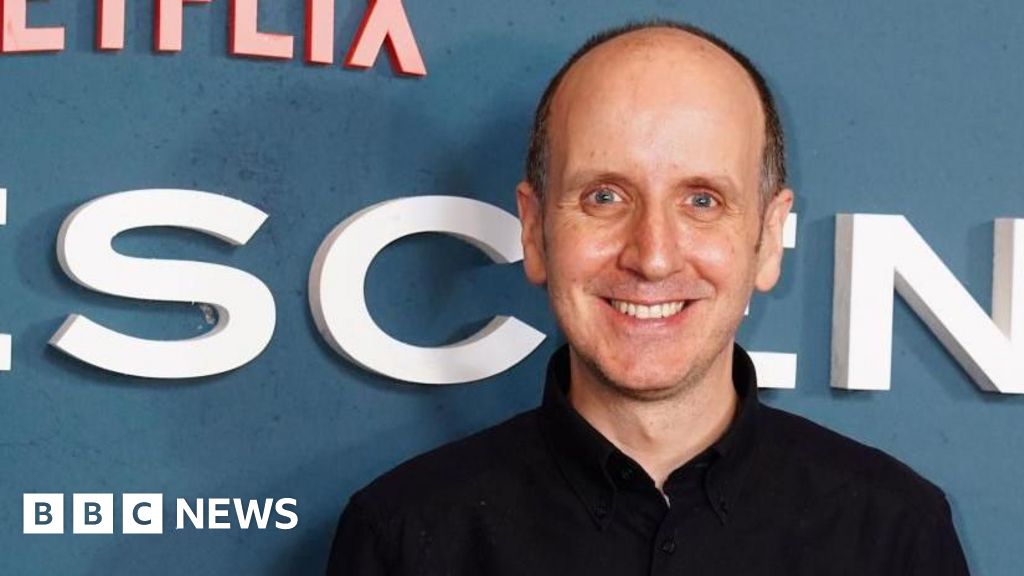





 English (US) ·
English (US) ·